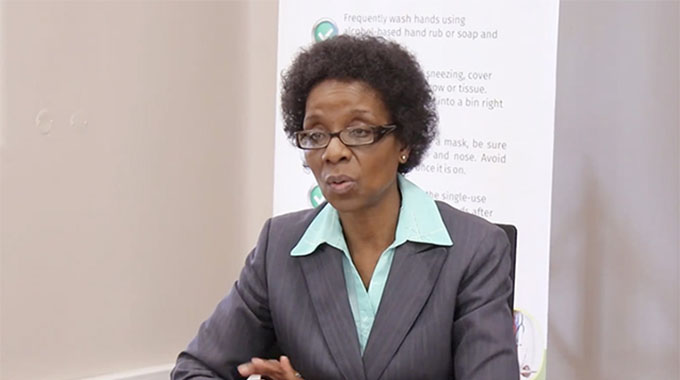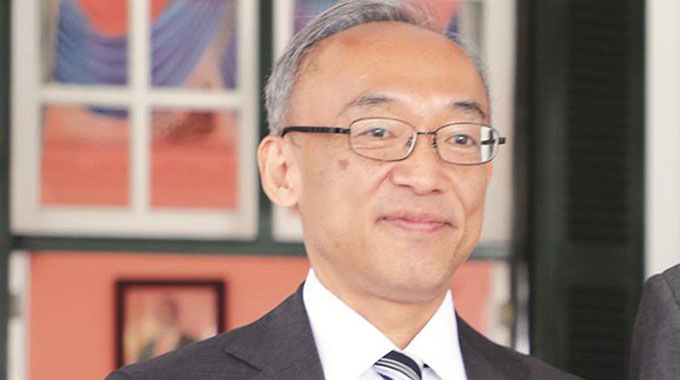Zimbabwe’s Covid 19 Journey

Robin Muchetu
SINCE the outbreak of the Covid-19 pandemic Zimbabwe’s Government led by President Emmerson Mnangagwa has worked tirelessly putting in place structures to protect citizens and ensure the virus is contained.
Government on March 27 declared a National Lockdown closing all borders and confining all citizens to their homes. Only essential service providers were allowed to work from March 30 when the lockdown began.
Prior to the national lockdown, President Mnangagwa had on March 17 declared Coronavirus State of National Disaster.
The President also announced measures that include closure of Zimbabwe’s borders to all non-essential travel, except for returning residents and cargo; closure of bars, nightclubs, movie houses, swimming pools, and sporting activities; restriction of all public gatherings to fewer than 50 people and the restriction of hospital visits to no more than one per day.
On March 21, Zimbabwe reported its first COVID-19 cases: a male resident of Victoria Falls who travelled back from the UK via South Africa on 15 March, and that of journalist Zororo Makamba.
On March 23, Makamba became the first person to die of Covid -19 in Zimbabwe.
With the first cases confirmed, Government also set about to trace all contacts making sure they were tested and quarantined.
This resulted in the country’s first Covid-19 isolation Centre, Wilkins Hospital being spruced up with assistance from the Chinese Government to ensure that it was ready to accept patients.
Thorngrove Infectious Disease Hospital in Bulawayo also received a facelift to cater for patients that were coming from the southern part of the country.
Testing kits were made available and Zimbabwe soon had capacity to test, hence the mass testing programme got underway in earnest.
President Mnangagwa also set up a Covid-19 Task Force headed by Vice President Kembo Kohadi as a sign that Government was serious and dealing with the pandemic needed to be led from the very top.
Daily updates have been provided to the public from the Ministry of Health and Child Care with number of tests conducted, recorded deaths, positive cases, recoveries and the media has been awash with messages on the effects of the Coronavirus and how it can be contained.
Cities on the other hand have been disinfected and decongested in order to curb the spread of the virus.
Cases have continued to increase but at an extremely slow rate putting to shame prophets of doom who had predicted a meltdown in Zimbabwe given the state of the country’s health system affected by years of sanctions and consequently lack of investment in one of the most important social sectors.
By May 15, Zimbabwe had 42 confirmed cases, including 13 recoveries and four deaths.
When the first 21 Day National Lockdown ended on April 17, President Mnangagwa announced a 14-day extension arguing the growing infections across the globe showed the corona virus still posed a threat to Zimbabwe.
A further extension of the National Lockdown was announced on May 2, this time allowing key economic sectors to begin operating albeit with stringent conditions including testing of staff as well as checking of temperature on a daily basis.
Government on the other hand, has been quarantining all returning residents for a mandatory 21 days until they are given an all clear sign and are released to their homes.
These and other measures such as the National Lockdown observed by all Zimbabweans ensures the country continues to record some of the lowest infection figures in the world.
Government efforts to contain the virus have been stepped up with authorities also devolving the testing centers from provinces like Bulawayo where the National TB Reference Laboratory is currently being used for testing at Mpilo Central Hospital with the assistance of the National University of Science and Technology Applied Genetic Testing Centre.
Provision of Personal Protective Equipment (PPE) as well as sanitisers have also been prioritized especially for frontline health practitioners.
The private sector also weighed in to assist in the fight against the pandemic by donating PPE, disinfectants, food staffs and other materials.
Schools and institutions of higher learning remain closed until there is a clear roadmap on how learners will be assimilated back in to the system in an orderly manner ensuring their safety is guaranteed.







Comments